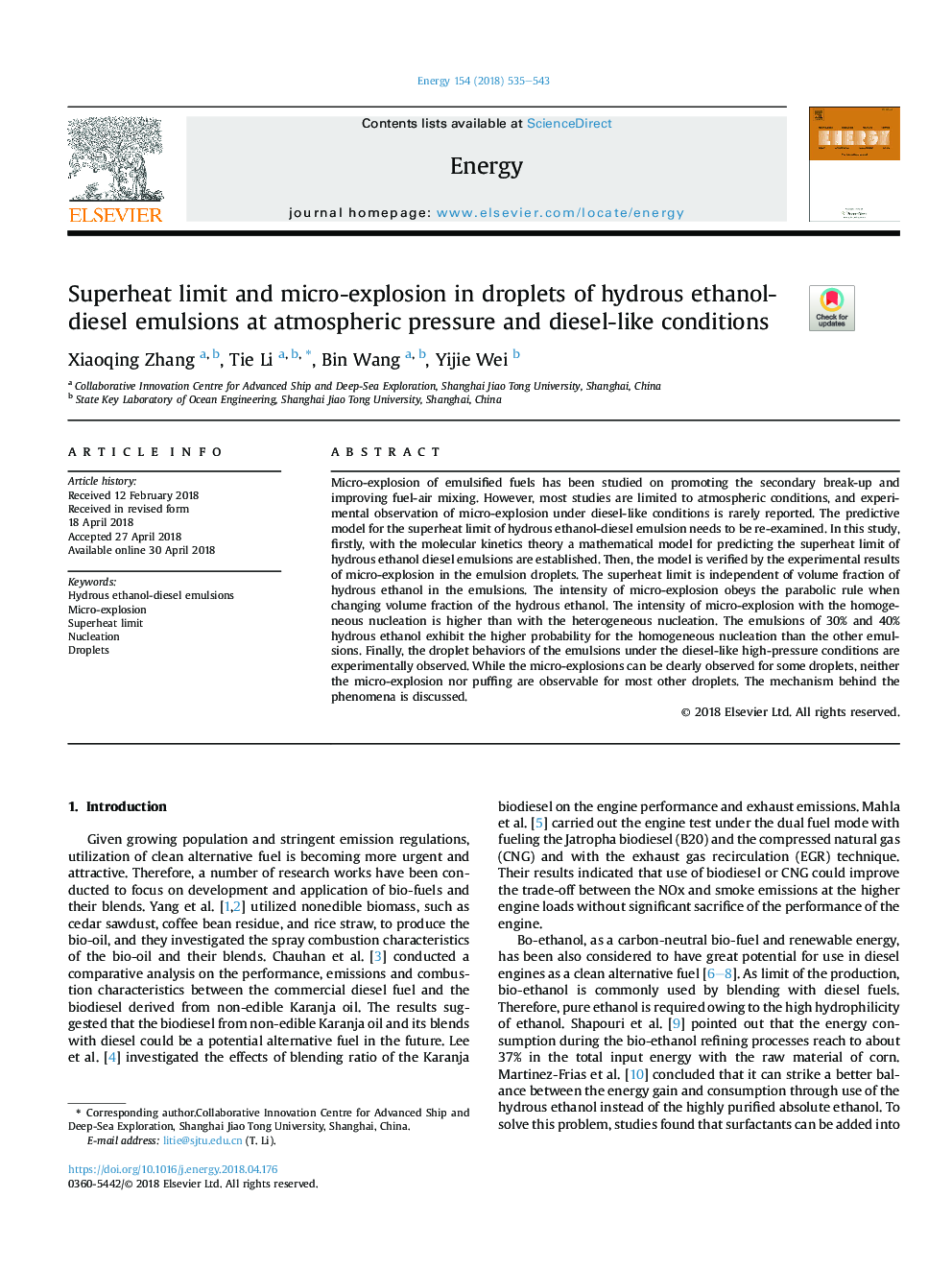| Article ID | Journal | Published Year | Pages | File Type |
|---|---|---|---|---|
| 8071489 | Energy | 2018 | 9 Pages |
Abstract
Micro-explosion of emulsified fuels has been studied on promoting the secondary break-up and improving fuel-air mixing. However, most studies are limited to atmospheric conditions, and experimental observation of micro-explosion under diesel-like conditions is rarely reported. The predictive model for the superheat limit of hydrous ethanol-diesel emulsion needs to be re-examined. In this study, firstly, with the molecular kinetics theory a mathematical model for predicting the superheat limit of hydrous ethanol diesel emulsions are established. Then, the model is verified by the experimental results of micro-explosion in the emulsion droplets. The superheat limit is independent of volume fraction of hydrous ethanol in the emulsions. The intensity of micro-explosion obeys the parabolic rule when changing volume fraction of the hydrous ethanol. The intensity of micro-explosion with the homogeneous nucleation is higher than with the heterogeneous nucleation. The emulsions of 30% and 40% hydrous ethanol exhibit the higher probability for the homogeneous nucleation than the other emulsions. Finally, the droplet behaviors of the emulsions under the diesel-like high-pressure conditions are experimentally observed. While the micro-explosions can be clearly observed for some droplets, neither the micro-explosion nor puffing are observable for most other droplets. The mechanism behind the phenomena is discussed.
Related Topics
Physical Sciences and Engineering
Energy
Energy (General)
Authors
Xiaoqing Zhang, Tie Li, Bin Wang, Yijie Wei,
